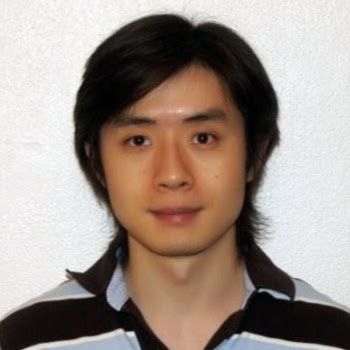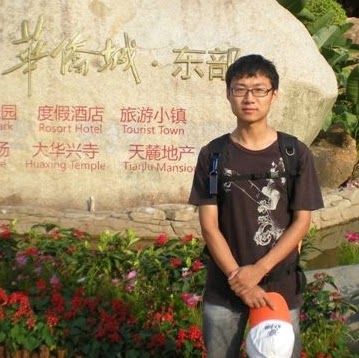Lang W Chen
age ~71
from Pickerington, OH
- Also known as:
-
- Lang Wei Chen
- Wei Chen Lang
- Luxia W Chen
- Chen Lang
- Phone and address:
-
912 Washington St, Pickerington, OH 43147
6143220501
Lang Chen Phones & Addresses
- 912 Washington St, Pickerington, OH 43147 • 6143220501
- Chino Hills, CA
- Saratoga, CA
- 4619 Refugee Rd, Columbus, OH 43232
Resumes

Lang Chen
view source
Lang Chen
view source
Lang Chen
view sourceLocation:
United States
Name / Title
Company / Classification
Phones & Addresses
Principal
Vertical Tours
Business Services
Business Services
1230 Nadina St, San Mateo, CA 94402
President
VIPEX TECHNOLOGIES, INC
300 Stanford Ave, Fremont, CA 94539
Managing
FORTUNE TRAVEL SERVICES, INC
Provide Transportation Services · Travel Agency
Provide Transportation Services · Travel Agency
1230 Nadina St, San Mateo, CA 94402
Us Patents
-
Message Addressing Techniques For A Mobile Computing Device
view source -
US Patent:8275398, Sep 25, 2012
-
Filed:Nov 2, 2007
-
Appl. No.:11/934450
-
Inventors:Benoit Boningue - Mountain View CA, US
Richard J. Donald - Brentwood CA, US
Lang Chen - Oakland CA, US
Rob Katcher - Sunnyvale CA, US
Phil McClendon - Sunnyvale CA, US -
Assignee:Hewlett-Packard Development Company, L.P. - Houston TX
-
International Classification:H04W 4/00
-
US Classification:455466, 455564, 4555501, 4554121, 455566
-
Abstract:Various embodiments are directed to improved message addressing techniques. In one embodiment, a computing device may comprise a messaging client arranged to receive an input sequence of alphabetic or alphanumeric characters as a destination of an outbound message. The messaging client may recognize that the input sequence represents a mnemonic short code and may automatically generate a common short code comprising a sequence of numeric digits associated with the mnemonic short code. The messaging client may display both the input sequence comprising the mnemonic short code and the common short code and enable the outbound message to be sent using the common short code as the destination. Other embodiments are described and claimed.
-
Method And Device For Enabling Message Responses To Incoming Phone Calls
view source -
US Patent:8311189, Nov 13, 2012
-
Filed:Oct 8, 2010
-
Appl. No.:12/901376
-
Inventors:David Champlin - Menlo Park CA, US
Srikiran Prasad - Cupertino CA, US
Lang Chen - Oakland CA, US
Rajan Ranga - Palo Alto CA, US
Robert Haitani - Menlo Park CA, US -
Assignee:Hewlett-Packard Development Company, L.P. - Houston TX
-
International Classification:H04M 1/64
H04N 7/10
H04W 4/12 -
US Classification:379 8817, 370329, 379 76, 379 8801, 37914201, 37921101, 37926509, 4554353, 455466, 455567, 709227, 725111, 725137
-
Abstract:A computing device is configured to receive an incoming communication from another computing device. The incoming communication may be for purpose of initiating a voice-exchange session. In response to receiving the incoming call, the computing device may identify or determine a message identifier of the other computing device. The message identifier is determined based at least in part on data provided with the incoming communication. The computing device may programmatically address a message to the other computing device using the message identifier determined from the incoming communication.
-
Messaging With Media Integration
view source -
US Patent:8577338, Nov 5, 2013
-
Filed:Aug 31, 2007
-
Appl. No.:11/848560
-
Inventors:Radha Neelakantan - Sunnyvale CA, US
Peter Fry - Andover MA, US
Richard J. Donald - Brentwood CA, US
Manisha D. Parekh - Mountain View CA, US
David G. Champlin - San Diego CA, US
Lang S. Chen - Oakland CA, US
Benoit Boningue - Mountain View CA, US
Ryan Case - Sunnyvale CA, US -
Assignee:Palm, Inc. - Sunnyvale CA
-
International Classification:H04Q 7/22
-
US Classification:4554121, 455566
-
Abstract:Techniques involving messaging applications are disclosed. For example, an apparatus may include a communications interface module and a messaging module. The communications interface module may receive an incoming message of a conversation thread that is originated by a remote device. The incoming message includes a text portion and an attached media item. The messaging module automatically outputs the incoming message to a user interface in an output format. This output format includes both the text portion and content of the attached media item. The attached media item may be of various types. Examples of media items include video files, audio files, image files, resource locators, and application files. The embodiments, however are not limited to these examples.
-
Remote Voice Interactive Computer Systems
view source -
US Patent:20020191754, Dec 19, 2002
-
Filed:May 30, 2001
-
Appl. No.:09/871487
-
Inventors:Zhenyu Liu - Pleasanton CA, US
Lang Chen - Fremont CA, US -
International Classification:H04M001/64
-
US Classification:379/088010
-
Abstract:A voice activation system for a home or office computer allows a user at a remote location to telephone the computer. A modem or other voice hardware for the computer provides a voice signal from the user to a voice activation system that analyzes the voice signal. When the voice activation system recognizes spoken commands in the voice signal, the voice activation system activates procedures according to the spoken command. One procedure in a system that uses the analog voice signal on a telephone line for voice and data hangs up on the user, contacts a dial-up service, downloads voice or e-mail messages from the dial up service, and the calls the user back. Another procedure accesses data such as a telephone number list stored in the computer and converts the data into a voice signal sent to the user at the remote location. With this system, the user can remotely access a computer and retrieve e-mail, voice mail, telephone numbers, and other information without special hardware such as a portable computer and can conduct the remote access without the need for hand touch.
-
Voice Recognition And Activation System
view source -
US Patent:20030101052, May 29, 2003
-
Filed:Oct 5, 2001
-
Appl. No.:09/972308
-
Inventors:Lang Chen - Fremont CA, US
Michael Yeung - Fremont CA, US
Zhenyu Liu - Pleasanton CA, US -
International Classification:G10L019/12
-
US Classification:704/223000
-
Abstract:Voice processing methods and circuits use bandpass filters and energy detectors to determine the energy in frequency channels of a voice signal. A bit array having a horizontal direction corresponding to the channels and a vertical direction corresponding to time provides a representation of the voice signal that can be stored during training and compared to other bit arrays during voice recognition. One comparison method compares horizontal lines of bit arrays using a position-weighted K factor. A segmentation process divides arrays into segments to better identify corresponding lines in arrays. Corresponding lines can also be selected in segments using an alternating top-down/bottom-up best match process. When this comparison finds a matching array, the match is confirmed if match result is significantly better than a match result for a bit array corresponding to different voice command and if vertical checking confirms the match. Thresholds indicating horizontal and vertical matching arrays and the required gap between the match results of different commands can be set according to the desired voice recognition sensitivity.
-
Computerized Teaching, Practice, And Diagnosis System
view source -
US Patent:20060099563, May 11, 2006
-
Filed:Nov 5, 2004
-
Appl. No.:10/982439
-
Inventors:Zhenyu Lawrence Liu - Pleasanton CA, US
Xin Chen - Pleasanton CA, US
Lang Shie Chen - Fremont CA, US -
International Classification:G09B 3/00
-
US Classification:434350000, 434362000
-
Abstract:A teaching system provides explanatory materials, examples, and problems on an interactive basis and adapts to the student. The system can generate random questions for presentation to the student as multi-step examples or practice problems. The student's answers during each step of a multi-step practice problem can be evaluated to identify weaknesses. Identified weaknesses can be remedied by presenting additional explanations, providing additional practice problems, and revisiting the weaknesses by inserting practice problems of the identified type into the student's subsequent lessons. The system can also adapt adjusting the speed or number of steps presented according to the student's performance. The system can further provide detailed analysis or diagnosis of the student's performance that can be communicated to teachers and/or parents for use in other teaching environments. The teaching system when embodied in a web site further provides communication among students, teachers, and parents.
-
Method And Device For Enabling Message Responses To Incoming Phone Calls
view source -
US Patent:20070036286, Feb 15, 2007
-
Filed:Aug 8, 2005
-
Appl. No.:11/200511
-
Inventors:David Champlin - Menlo Park CA, US
Srikiran Prasad - Cupertino CA, US
Lang Chen - Oakland CA, US
Rajan Ranga - Palo Alto CA, US
Robert Haitani - Menlo Park CA, US -
International Classification:H04M 1/64
-
US Classification:379067100
-
Abstract:A computing device is configured to receive an incoming communication from another computing device. The incoming communication may be for purpose of initiating a voice-exchange session. In response to receiving the incoming call, the computing device may identify or determine a message identifier of the other computing device. The message identifier is determined based at least in part on data provided with the incoming communication. The computing device may programmatically address a message to the other computing device using the message identifier determined from the incoming communication.
-
Techniques For Group Messaging On A Mobile Computing Device
view source -
US Patent:20090061825, Mar 5, 2009
-
Filed:Aug 31, 2007
-
Appl. No.:11/849211
-
Inventors:Radha NEELAKANTAN - Sunnyvale CA, US
Benoit BONINGUE - Mountain View CA, US
Richard J. DONALD - Brentwood CA, US
Manisha D. PAREKH - Mountain View CA, US
Ryan CASE - Sunnyvale CA, US
Peter FRY - Andover MA, US
David G. CHAMPLIN - San Diego CA, US
Lang S. CHEN - Oakland CA, US -
Assignee:PALM, INC. - Sunnyvale CA
-
International Classification:H04Q 7/22
H04Q 7/20 -
US Classification:4554121, 455466
-
Abstract:Techniques for group messaging on a mobile computing device are described. An apparatus may comprise a message server to communicate messages between multiple mobile computing devices. The message server may have a group message management module to establish a group messaging session between the multiple mobile computing devices. The group message management module may have a group generating module to receive a message with a group message indicator and identifying information for multiple mobile computing devices within the message. The group generating module may form a message group to communicate messages from any one of the mobile computing devices to all of the mobile computing devices for the group messaging session. Other embodiments are described and claimed.

Lang Chen
view source
Lang Chen
view source
Lang Chen
view source
Lang Chen
view source
Lang Chhay Chen
view source
Lang Chen
view source
Lang Chen
view source
Lang Chen
view sourceFlickr
Googleplus

Lang Chen
Education:
Yale University - Religious studies, Harvard Divinity School - M.T.S., Peking University - Chinese Literature

Lang Chen
Education:
University of Wisconsin-Madison

Lang Chen

Lang Chen

Lang Chen

Lang Chen

Lang Chen

Lang Chen
Classmates

Shan-Lang Chen | St. Maur...
view sourceYoutube
Get Report for Lang W Chen from Pickerington, OH, age ~71













